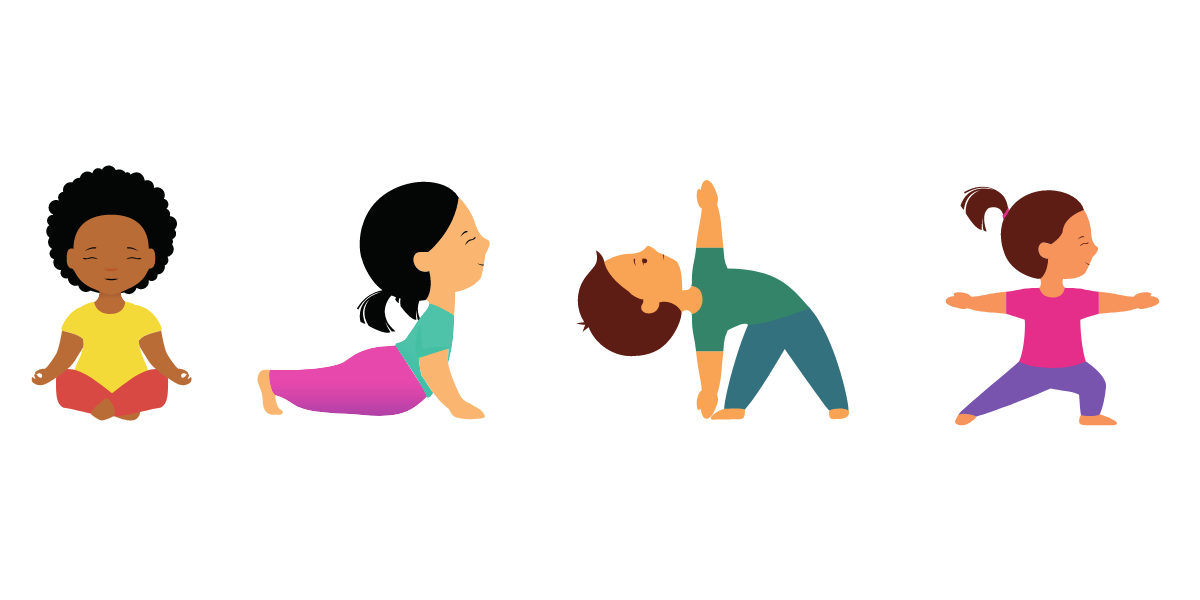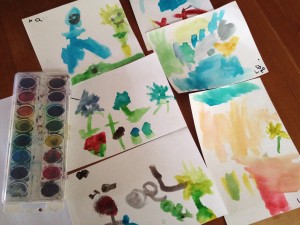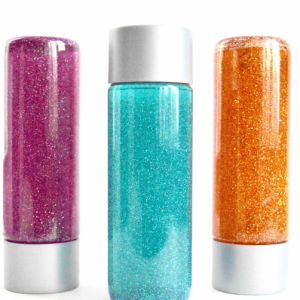Calming spaces in early childhood environments are widespread but creating them with intentionality and teaching children how to use them can be big tasks. When we see disruptive behavior as a sign of a dysregulated child, and provide the tools for that child to re-regulate, we are setting them up for lifelong success as they grow to become people with strong self-regulation and impulse control skills.
These two handouts provide opportunities for you to reflect on how adults use their sensory systems to self-regulate and how to use that information to create calming spaces to support children’s social-emotional development.
Yoga can help calm and restore the mind and body and it can be a great strategy for helping children become more in touch with their bodies and how to manage their energy. Check out this information about the benefits of yoga with kids from PBS.org:
We had a morning that was high energy and bordering on craziness and it wasn’t even 8am. The forecast was calling for rain and the weather change had the kids running around and acting silly. I was trying to think of something to redirect their energy and opened the art cabinet. I found some scraps of watercolor paper and pulled out the tray of watercolor paints and some brushes.
As soon as they got started the place calmed right down. I asked them to think about what they wanted to paint before they got started and then reminded them about dipping the brush in the water first and then rubbing it on the watercolor cake to pick up the color. One of the kids was unhappy with a color he had put on his paper and we tried wetting it with water and dabbing it with a paper towel and most of the color came right off.
They stayed with the painting for almost 40 minutes and it really changed the tone of the whole day! It was a great reminder about how soothing and calming watercolor painting can be for children.
I recently visited the Botanical Garden near Chicago with my children and also participated in a Nature Workshop, which has left me amazed at the calming and restorative power of being in nature. It is something I know as a parent of two active young boys is of utmost importance as a part of our every day life. And it is something that I think I just know, in my bones, from my childhood. Nature is really powerful for uncluttering the mind. Maybe it is the air, or the activating of the senses, or the feeling of sharing the experience of nature (even if you are alone) with humankind.
It also recently dawned on me that these nature experiences appeal to my senses in an aesthetic way and I feel a sense of inner calm with its beauty. The grounds at the Chicago Botanic Gardens are almost overwhelmingly beautiful and the amount of care put into making them so healthy and vibrant and beautiful is also overwhelming. The workshop was a science and nature workshop, but was equally an aesthetic experience, and placed in the more organic and natural forest setting of the North Park Village Nature Center. It was a day of serenity and beauty that was restorative to my spirit and energy.
This is as true for young children as it is for adults. I love taking children outside and into nature areas. They immediately seem to slow down. They begin to look intently for insects and they make new discoveries. When I can finally convince them to leave they are calmer and more focused at the same time. For some, art can bring about the same experience of calm and focus. By combining the two we can tap into the inner calm of children and provide an escape from the sometimes overbearing, overwhelming, and demanding world around them.
We encourage everyone to get out and experience more nature with children and bring drawing materials. You will be amazed at the change in behavior, mood and focus that comes from experiencing art and nature together.
Children can help create sensory calming jars to help them with self-regulation and encourage mindfulness. Use any clear container with a tight fitting lid and help children as needed to fill them with water, oil, glitter, confetti, food coloring, or beads. Secure the lid tightly. You can even use hot glue around the edge of the lid to be sure it is sealed. Then allow children to use them to help them regain focus and be calm by shaking and gazing at the movement and patterns.
Children can help create sensory calming jars to help them with self-regulation and encourage mindfulness. Use any clear container with a tight fitting lid and help children as needed to fill them with water, oil, glitter, confetti, food coloring, or beads. Secure the lid tightly. You can even use hot glue around the edge of the lid to be sure it is sealed. Then allow children to use them to help them regain focus and be calm by shaking and gazing at the movement and patterns.

Para ver este recurso en español haga clic aqui



